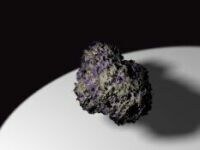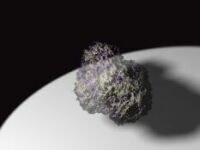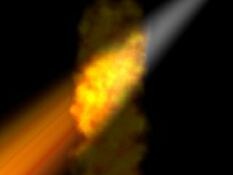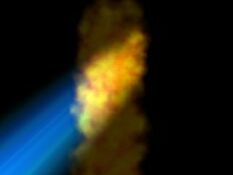Globals
Use this setting to define whether or not a scene’s PyroCluster effects should be calculated.
Activate the Render Objects option to calculate the scene’s PyroCluster effects.
Activate the Render Hidden Objects setting to calculate a scene’s hidden PyroCluster objects.
Here you can choose from various preset render modes. The main differences between these modes are their render quality and how long they take to render. In order of best render quality (and longest render time) first, these are:
- Crispy
- Crispy-Gas
- Hazy
The following mode:
- User allows you to set your own render mode using various parameters that will no longer be ghosted including World Step Size and Ray Trans Limit.
The importance of global distance is described in detail in the Volume Tracer. This is the most important PyroCluster setting when it comes to speed of calculation and image quality.
This setting offers another possibility for speeding up calculations. It defines the limit for the Volume Tracer engine. Normally a raytracing ray that is directed into a volume will be raytraced very deeply (followed) until a point’s transparency is equal to 0 (completely opaque). You will, though, never notice when the Volume Tracer has reached 100% opacity and has stopped calculating. A value between 1% and 10% are recommended to decrease render times.
ShadowMap Step Size [0.01..+∞]
As already explained for the Volume Tracer, sampling volume in PyroCluster can be a little tricky. The settings and their effects are the same as described for Sample Distance, the only difference being these settings affect shadow maps only.
ShadowMap Trans. Limit [0..100%]
Calculation time can also be sped up using this setting. It defines the stopping point of the Volume Tracer engine. Normally a raytracing ray that is directed into a volume will be raytraced very deeply (followed) until a point’s transparency is equal to 0 (completely opaque). You will, though, never notice when the Volume Tracer has reached 100% opacity and has stopped calculating. A value between 1% and 10% are recommended to decrease render times.
Raytraced Step Size [0.01..+∞]
As already explained for the Volume Tracer, sampling volume in PyroCluster can be a little tricky. The settings and their effects are the same as described for Global, the only difference being these affect only hard shadows.
Raytraced Trans. Limit [0..100%]
Calculation time can also be sped up using this setting. Normally a raytracing ray that is directed into a volume will be raytraced very deeply (followed) until a point’s transparency is equal to 0 (completely opaque). You will, though, never notice when the Volume Tracer has reached 100% opacity and has stopped calculating. A value between 1% and 10% are recommended to decrease render times.
RayTrans. Correction [0..100%]
As explained in the previous sectionPyroCluster Tips & Tricks, if you increase the transparency cut-off value used by the Volume Tracer (the Ray Trans. Limit value) you gain render speed. However, some artifacts may appear when using Ray Trans. Limit to the extreme. In these cases you should enable the RayTrans. Correction, which will attempt to correct these problems — see the images above.
Disabling RayTrans. Correction means that the volume effects will render more transparently as you increase the Ray Trans. Limit This happens because the rays traveling into the volume are stopped before they become 100% opaque. PyroCluster uses the transparency value as it is set in the Limit box. To prevent this, enable the RayTrans. Correction parameter.
 RayTrans. Correction = On RayTrans. Correction = On |  RayTrans. Correction = Off RayTrans. Correction = Off |
By default, PyroCluster supports volume light effects. You may use any Cinema 4D light and effect to illuminate PyroCluster atmospherics, including Inverse Volumetric lights.
To obtain colored volume light shadows, enable the Shadow Color Filter option on the Shadow page for PyroCluster.
Gradients
Understanding how the gradients work is key to getting the most out of PyroCluster.
 Volume light with Shadow Color Filter turned onr Volume light with Shadow Color Filter turned onr |  Volume light with an inverted light effect Volume light with an inverted light effect |
How are colored volume light shadows created?
To obtain colored volume light shadows, enable the Shadow Color Filter option on the Shadow page for PyroCluster.